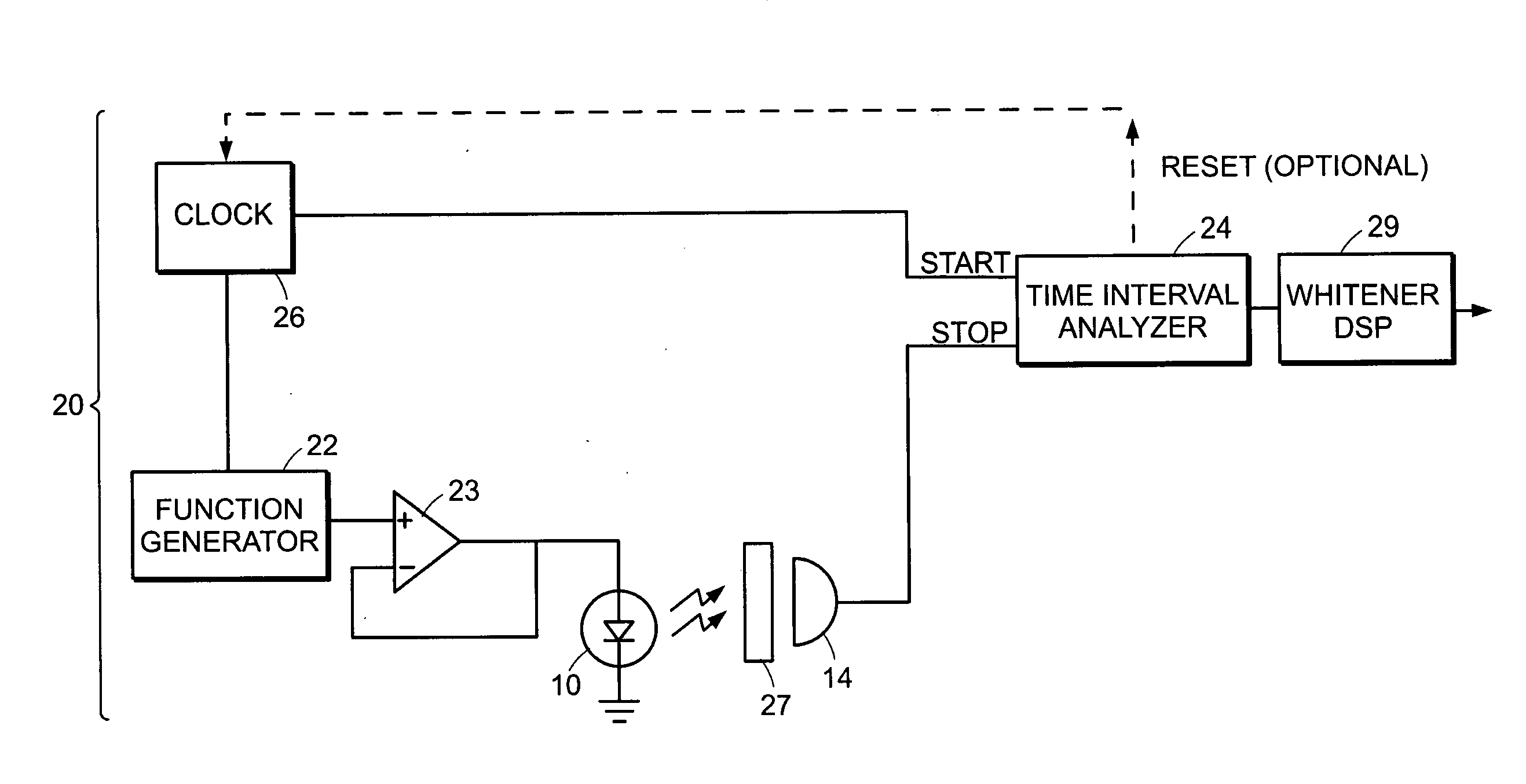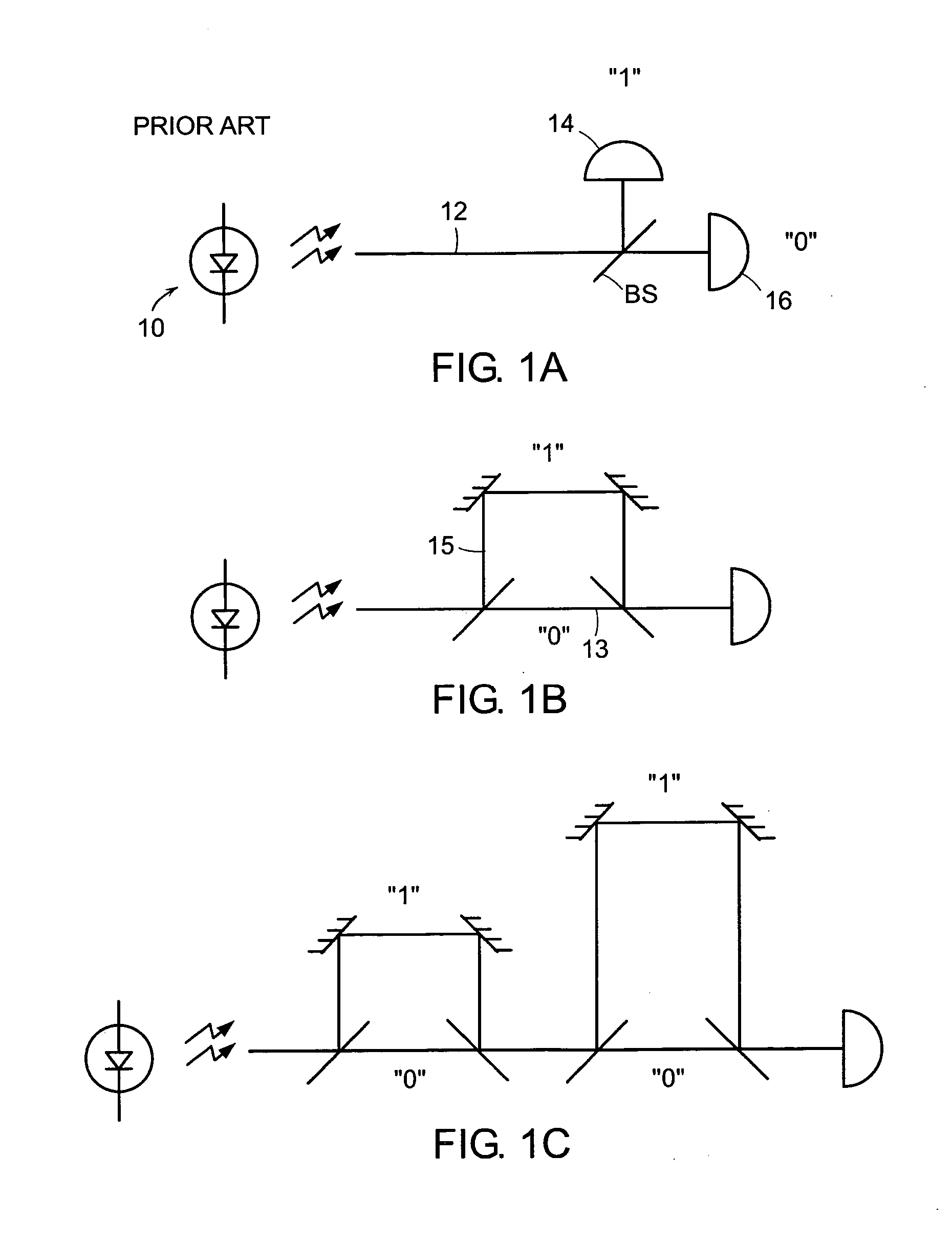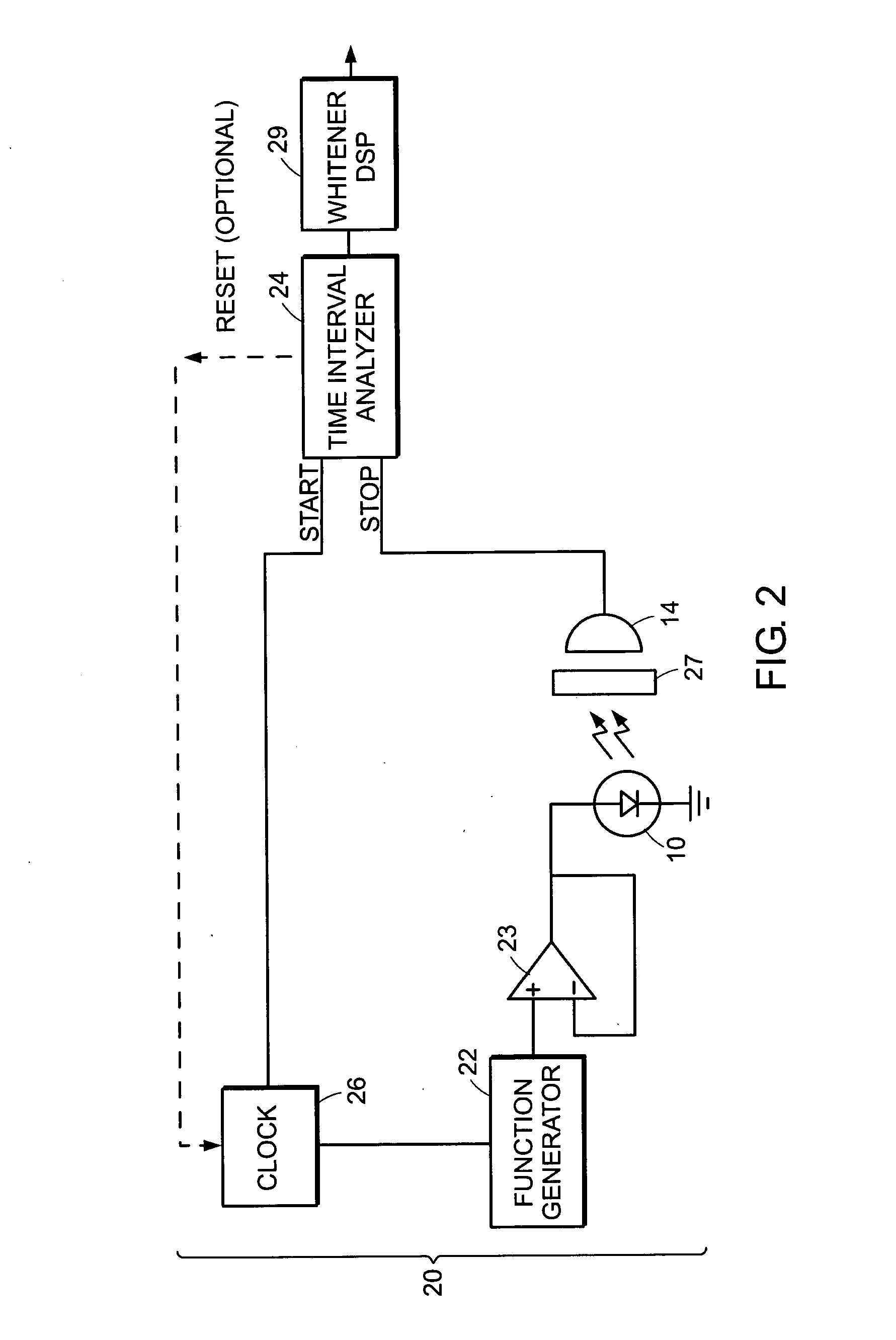Quantum random number generator
a random number generator and quantum technology, applied in the field of random number generation, can solve the problems of limiting the photo-detection rate, limiting the number of random numbers, and complicated, yet ultimately deterministic calculations, and achieve the effect of maximizing the number of random bits generated
- Summary
- Abstract
- Description
- Claims
- Application Information
AI Technical Summary
Benefits of technology
Problems solved by technology
Method used
Image
Examples
Embodiment Construction
[0016] Random numbers can be extracted from a quantum system by measuring the quantum system in a basis in which the system is not in an eigenstate (but, rather, in a ‘superposition’ or ‘mixed’ state). The number of bits which can be extracted depends on the dimensionality of the Hilbert-space characterizing the quantum system, the ability of the detector to resolve the bases in Hilbert space, and the state of the quantum system, in particular, the likelihood of each of the resolvable quantum states.
[0017] Typically, random number generators (RNGs) based on photon detection use single-(qu)bit Hilbert spaces, i.e., they are characterized by a single quantum variable: polarization, path choice at a beam splitter, or photon number. (It should be noted that, while photon number has a theoretically infinite dimensionality, most current detectors cannot count photon numbers greater than 1, so only have two resolvable outputs corresponding, respectively, to the detection of one or more ph...
PUM
 Login to View More
Login to View More Abstract
Description
Claims
Application Information
 Login to View More
Login to View More - R&D
- Intellectual Property
- Life Sciences
- Materials
- Tech Scout
- Unparalleled Data Quality
- Higher Quality Content
- 60% Fewer Hallucinations
Browse by: Latest US Patents, China's latest patents, Technical Efficacy Thesaurus, Application Domain, Technology Topic, Popular Technical Reports.
© 2025 PatSnap. All rights reserved.Legal|Privacy policy|Modern Slavery Act Transparency Statement|Sitemap|About US| Contact US: help@patsnap.com



